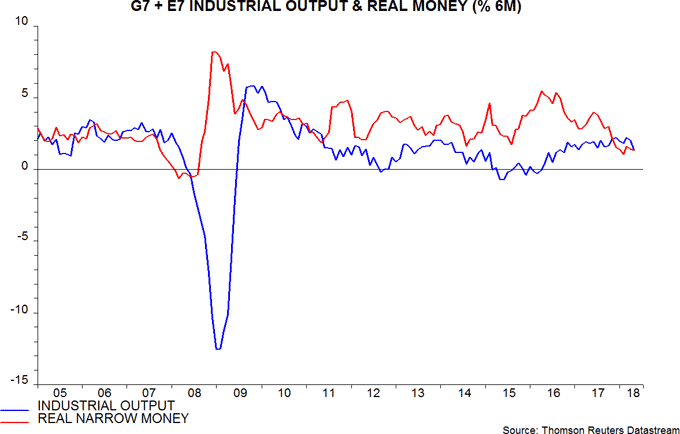Global industrial activity cooling, money trends stable
Global six-month industrial output growth appears to have fallen sharply in May, consistent with the long-standing forecast here, based on monetary trends, of an economic slowdown starting around spring 2018. Global six-month real (i.e. inflation-adjusted) narrow money growth, meanwhile, was little changed for a second month in May and slightly above the nine-year low reached in February – the monetary message is that economic prospects remain weak but have not deteriorated further.
The May estimate of global (i.e. G7 plus E7) six-month industrial output growth shown in the chart incorporates data for the US, China and Russia – together accounting for 50% of the global aggregate – and an assumed 0.25% monthly rise in other economies. The latter assumption appears reasonable and possibly optimistic based on survey and other evidence, while output in those economies would have to surge by 1.5% to prevent a fall in global six-month growth. The global measure appears to have peaked in March, consistent with a peak in real narrow money growth in June 2017, allowing for the historical-average nine-month lead.

The US, China, Japan, Brazil and India have released May monetary data, with numbers for most of the remaining countries due next week. The May estimate of global six-month real narrow money growth in the chart extrapolates recent nominal monetary trends in missing countries while incorporating near-complete consumer price data.
The February low in real money growth suggests that industrial output growth will continue to decline into around November 2018.
Monetary trends, it should be emphasised, are signalling a slowdown, not a recession. Six-month real narrow money growth bottomed well above zero. Real money contracted before the six global recessions since 1970.
The lack of a significant recovery to date in real money growth suggests that global economic momentum will remain soft into early 2019.

Reader Comments